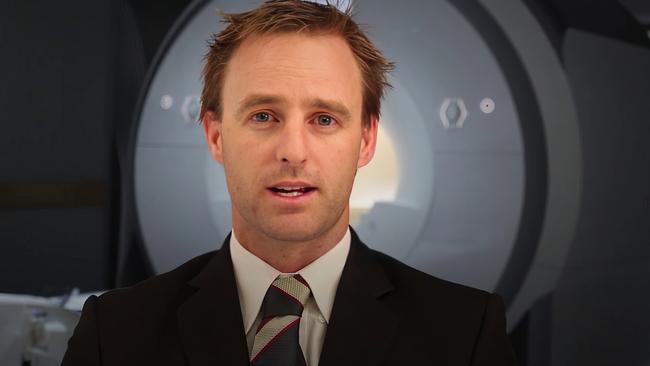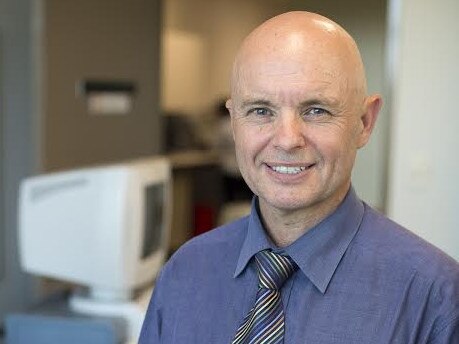‘There’s been a huge bow drawn between the end result of CTE and their exposure to American football’
The NRL’s concussion advisers Associate Professor Andrew Gardner and Professor Chris Levi say more research must be done to determine if head knocks and dementia are linked.

The men leading what the NRL calls “transformative” research have publicly questioned the links between head knocks and degenerative brain disease.
Associate professor Andrew Gardner and professor Chris Levi are the NRL’s main concussion advisers, who meet rugby league powerbrokers often to consult about their policies, and both have publicly disputed the mainstream science around head injuries and degenerative brain disease.
Dr Gardner is also a member of the AFL’s concussion research group and is Rugby Australia’s concussion adviser and also consults to World Rugby.
Professor Levi publicly attacked researchers in 2019, saying there was no proof that chronic traumatic encephalopathy (CTE) was caused by head knocks. “We’re increasingly concerned that the public is being fed information that is unbalanced and at times misleading,” Professor Levi said then.
The claim that concussion was linked to health problems was anecdotal and “not evidence”.
“Correlation and causation are quite different,” he told the Newcastle Herald.

Dr Gardner echoed Professor Levi’s views in a 2019 public lecture in the Hunter Valley where a panel of former Newcastle Knights stars including Paul Harrogan, Timana Tahu and Marc Glanville took centre stage.
“Now there’s been a huge bow drawn between the end result of CTE and their exposure to American football,” Dr Gardner said, adding that it would take a “generation or two of athletes” to definitively prove repeated head knocks caused dementias such as CTE.
However, the US Centres for Disease Control and Prevention- the declared in 2019 that CTE was caused “in part” by repeated head injury. The US National Institute of Health made a similar declaration in 2022.
Critical to understanding the risk CTE poses is the ability to diagnose CTE “in life”. Currently that diagnosis can be made conclusively only at post mortem. CTE has been diagnosed in more than 660 former footballers, ice hockey players, wrestlers and boxers, with 97 per cent of cases found in those exposed to repetitive head injury.
CTE has been found in a number of former AFL and NRL stars including St Kilda’s Danny Frawley, Bulldogs coach Steve Folkes and premiership winning Cowboys coach Paul Green.
CTE symptoms include memory loss, confusion, impaired judgment, impulse control problems, aggression, depression, anxiety, parkinsonism, and, eventually, progressive dementia.
Suicide is also associated with CTE. Green, Frawley and ex-Richmond footballer Shane Tuck (who also was found to have CTE) all took their own lives, although researchers have strenuously cautioned against saying CTE causes suicide.
The AFL and NRL continue to fund research into the long-term effects despite many studies confirming the link between concussion and neuro-degenerative brain diseases.
In 2019, Dr Gardner told the NRL its “retired professional rugby league players brain health study” was the jewel in the crown of its plan to provide not only a “clear picture” of the current state of science but to improve “the health” of current and former footballers.
Former chief executive Todd Greenberg said it was the “world’s largest study into head injury in sport. It would be a “multinational, multiyear program to transform the understanding of head injuries”.
That view was echoed by Dr Gardner, who said the project would “not only allow us to identify problems and immediately refer former players for treatment, but it will also enable us to see former players periodically so we can examine brain health over time”.
The research is being held in conjunction with an NFL-funded project into former footballers led by Grant Iverson from Harvard University. Dr Iverson has also queried whether CTE is caused by repetitive head injury.
As news of the research partnership broke, Folkes’s daughter, Hayley Folkes-Shaw attacked the NRL, suggesting the funding was “just for show” and would not help families or players.
She said the league needed to show “they actually care about their players and families”.
Twelve papers have been published “relevant to the brain health of retired NRL players.”
One paper warned of the risk of misdiagnosing CTE, claiming nearly 30 per cent of men with “anger control problems” would meet the symptom criteria for CTE “in life”.
Two other studies investigated the link between concussion and depression and cognition, found no link with exposure to head injury instead attributing their problems to sleep disturbance, pain and resilience.
However, six former NRL players were excluded because they could not complete self-report questionnaires.





To join the conversation, please log in. Don't have an account? Register
Join the conversation, you are commenting as Logout